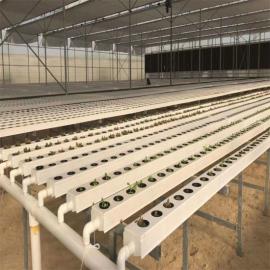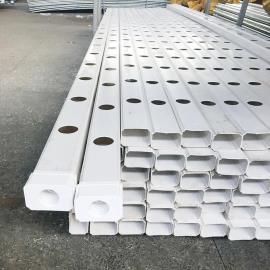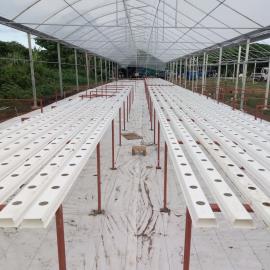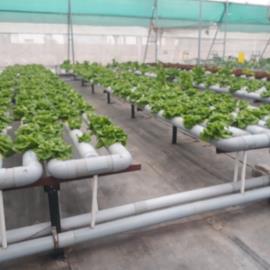Commercial Hydroponic Systems and Food Security: Impact and Potential
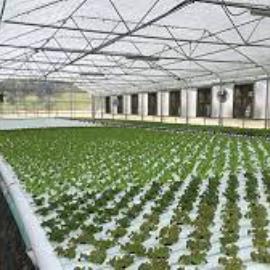
Commercial Hydroponic Systems and Food Security: Impact and Potential
Food security is a critical issue in today`s world, as an increasing population and climate change continue to put pressure on our ability to feed people. Commercial hydroponic systems offer a potential solution to this problem by providing a sustainable and efficient way to grow crops in controlled environments. In this article, we will explore the impact of commercial hydroponic systems on food security, as well as their potential to address the challenges of feeding a growing population.
What Is Food Security?
Food security is a multi-dimensional concept that encompasses access to food, availability of food, and utilization of food. According to the Food and Agriculture Organization (FAO), "food security exists when all people, at all times, have physical, social, and economic access to sufficient, safe, and nutritious food that meets their dietary needs and food preferences for an active and healthy life."Despite significant progress in reducing hunger and malnutrition in recent decades, the world still faces significant challenges in achieving food security for all. According to the FAO, an estimated 811 million people in the world were undernourished in 2020, and the COVID-19 pandemic has exacerbated food insecurity in many parts of the world.
What Are Commercial Hydroponic Systems?
Commercial hydroponic systems are a type of farming that grows crops without soil, using nutrient-rich water instead. Hydroponic systems can be used to grow a wide range of crops, including lettuce, tomatoes, peppers, strawberries, and herbs, among others.Hydroponic systems can vary in size and complexity, from small-scale systems for home use to large commercial operations that produce crops on a large scale. Hydroponic systems can be classified into several types, including deep water culture, nutrient film technique, and drip irrigation, among others.
Advantages Of Hydroponic Farming
Hydroponic farming offers several advantages over traditional soil-based farming. One of the main advantages is that hydroponic systems can produce higher crop yields than soil-based farming. This is because hydroponic systems provide crops with precise amounts of water, nutrients, and light, which can optimize plant growth and development.Another advantage of hydroponic farming is that it requires less water than soil-based farming. In hydroponic systems, water is recycled and reused, which can reduce water consumption by up to 90%. Hydroponic systems can also produce crops year-round, regardless of weather conditions, which can provide a more stable food supply.
The Impact Of Commercial Hydroponic Systems On Food Security
Commercial hydroponic systems have the potential to contribute significantly to food security by increasing crop yields, reducing water consumption, and providing a stable food supply year-round. Hydroponic systems can be used to grow crops in urban areas, where space is limited and traditional farming methods may not be feasible.Several successful hydroponic farming projects have already demonstrated the potential of commercial hydroponic systems to address food security challenges. For example, the company Plenty has developed a vertical farming system that can produce crops on a large scale in urban areas. Another company, AeroFarms, has developed an indoor farming system that uses LED lights and aeroponics to grow crops in a highly efficient and sustainable manner.
The Potential Of Commercial Hydroponic Systems For Food Security
The potential of commercial hydroponic systems to address food security challenges is significant. Hydroponic farming can provide a reliable source of fresh produce in areas where traditional farming methods are not feasible, such as urban areas or areas with poor soil quality. Hydroponic systems can also be used to grow crops in areas that are affected by climate change or natural disasters, which can disrupt traditional farming methods.
Advances in technology have also made hydroponic farming more efficient and cost-effective. For example, new LED lighting systems can provide crops with the exact amount of light they need to grow, while also reducing energy consumption. New hydroponic systems that use sensors and artificial intelligence can also optimize plant growth and reduce waste.
Despite these advances, scaling up hydroponic farming to meet the growing demand for food remains a challenge. Hydroponic systems require significant investments in infrastructure and technology, which can limit their adoption in many parts of the world. Additionally, the high energy requirements of hydroponic systems can limit their sustainability and contribute to carbon emissions.
Conclusion
In conclusion, commercial hydroponic systems have the potential to make a significant contribution to global food security. As the world continues to grapple with the challenges of feeding a growing population, hydroponic farming offers a sustainable and efficient way to grow crops and provide a stable food supply. With continued investment and research, hydroponic farming has the potential to revolutionize the way we grow and produce food in the years to come.
Latest News
-
20 Ridgeway Road, Edinburgh North 5113 South Australia
Contact Us
Address: 20 Ridgeway Road, Edinburgh North 5113 South Australia
Email: sales@pacerprofiles.com.au




